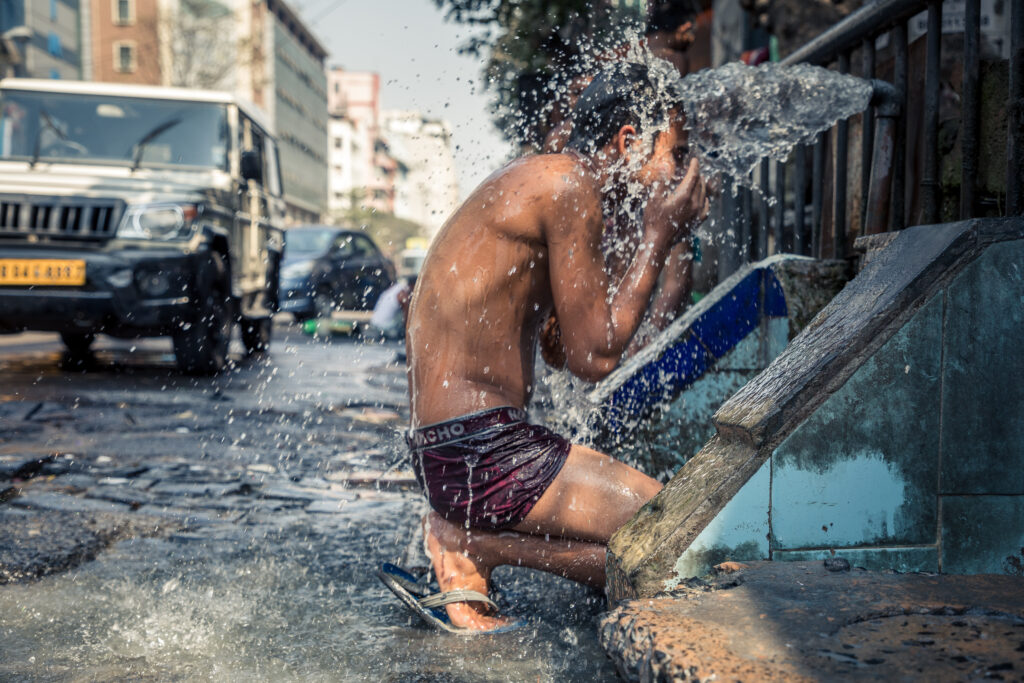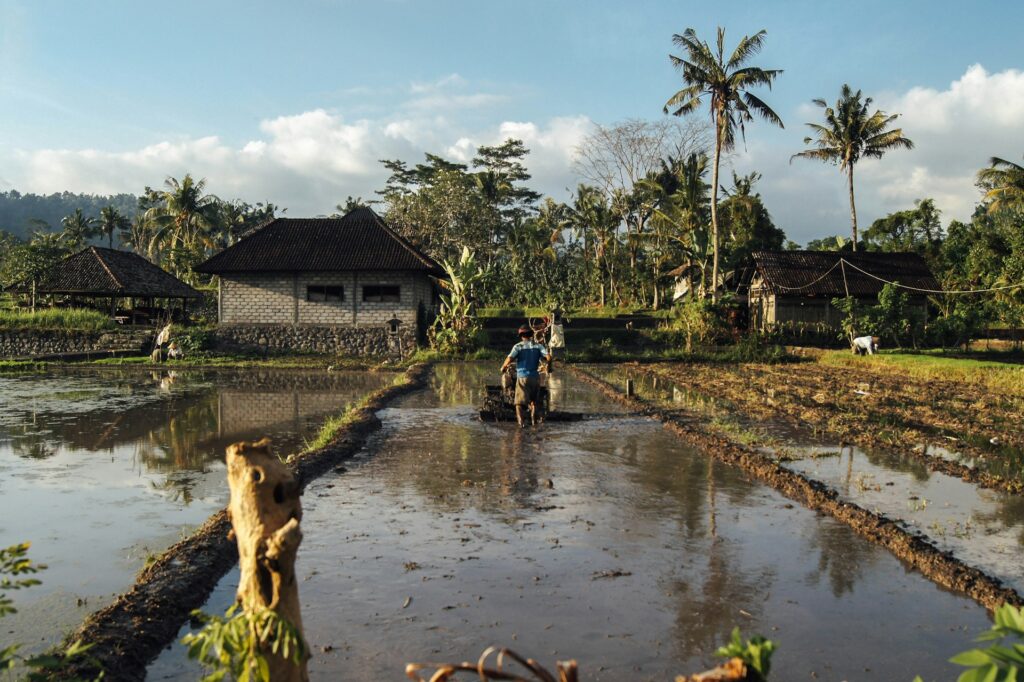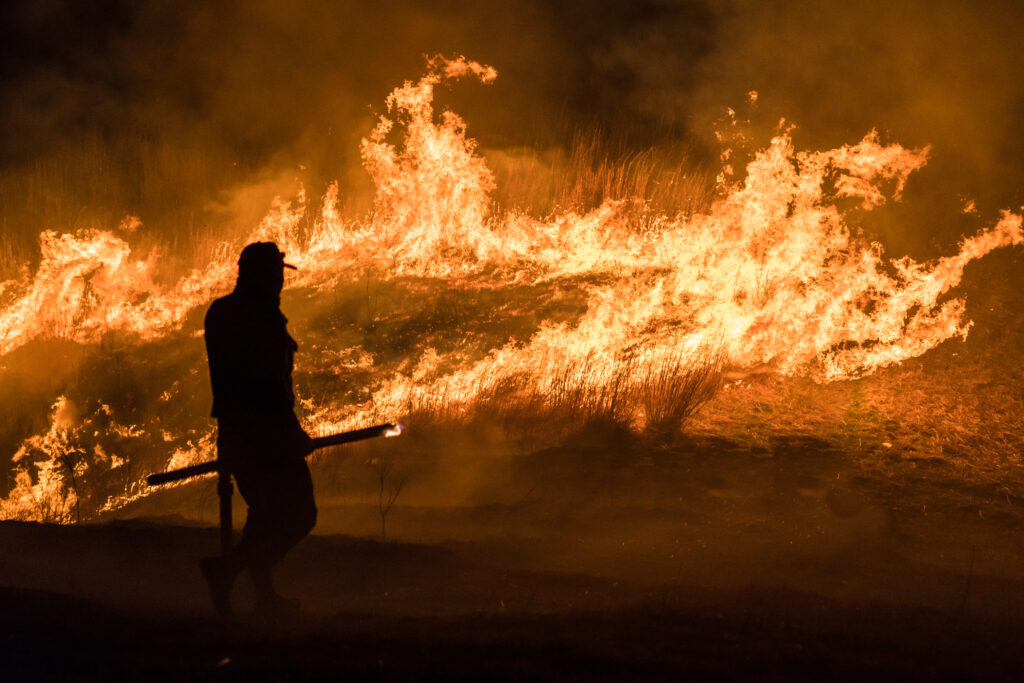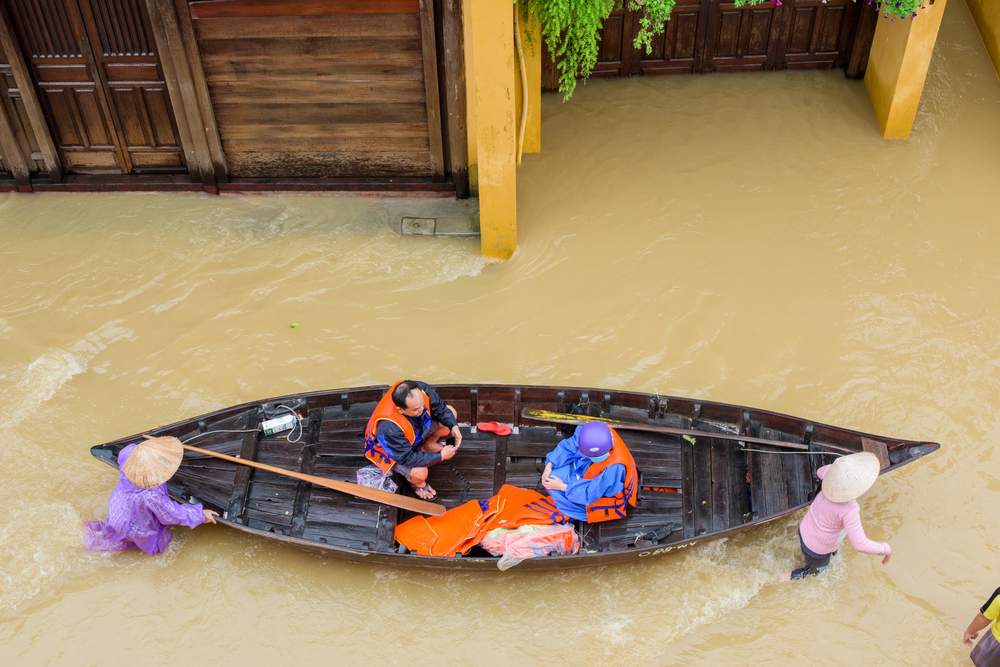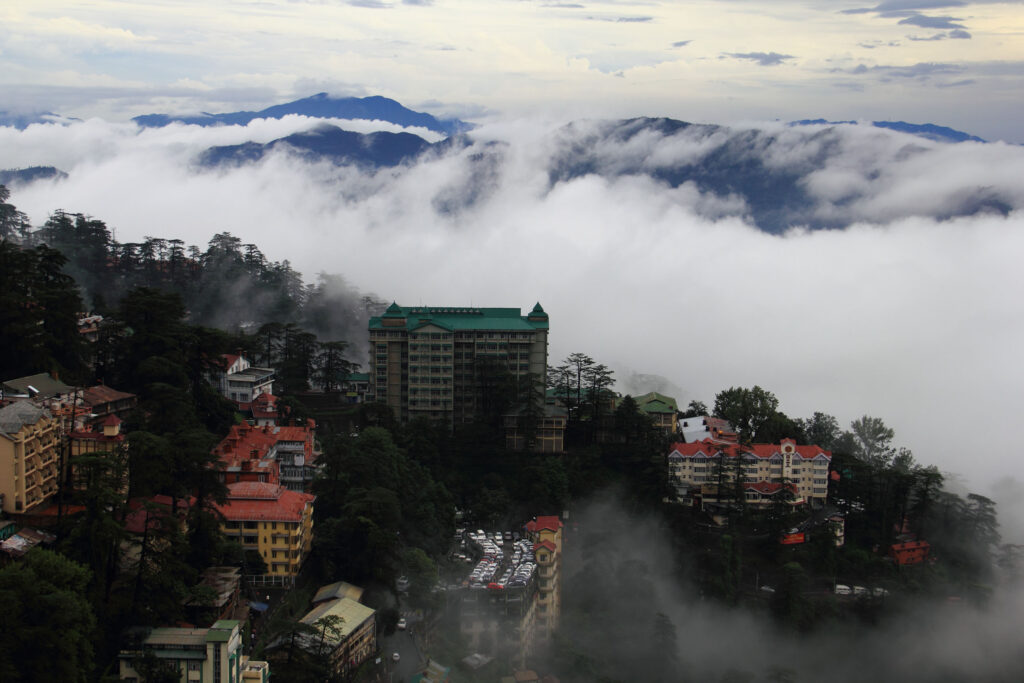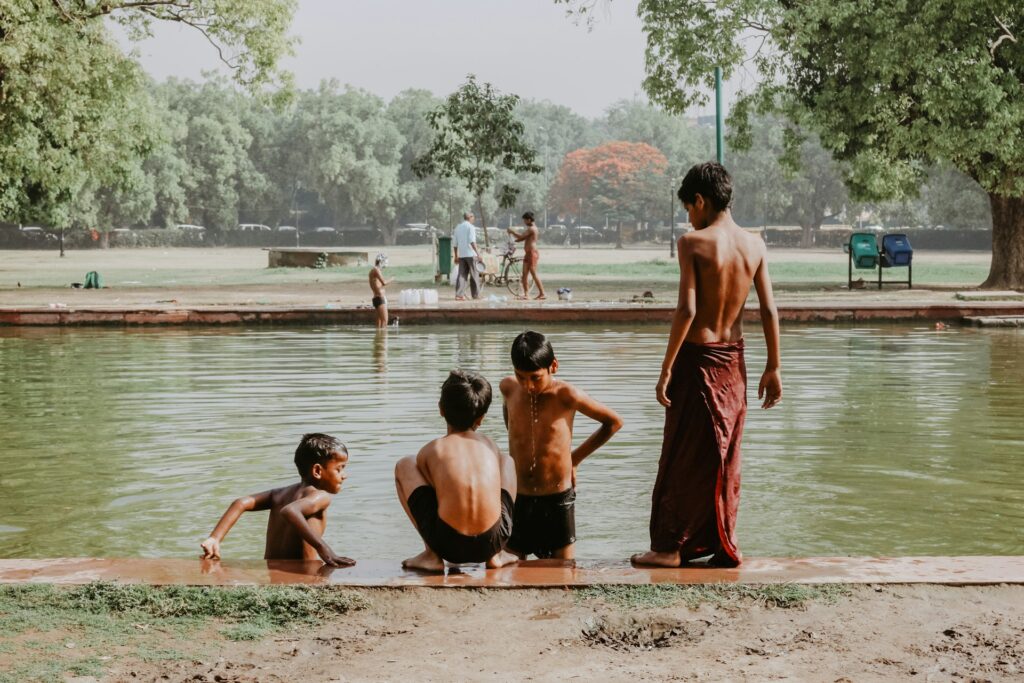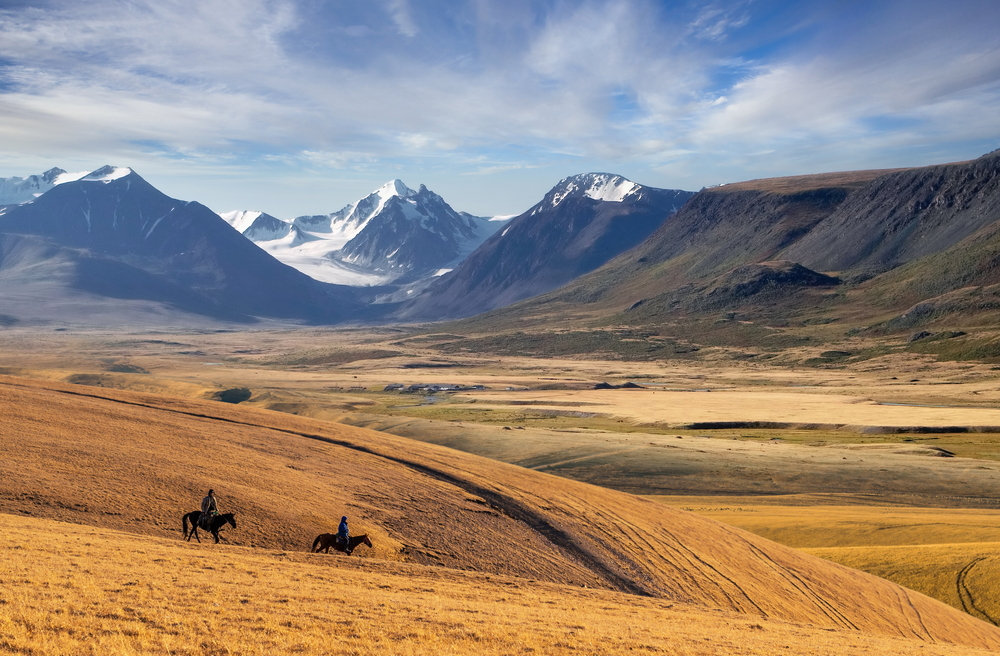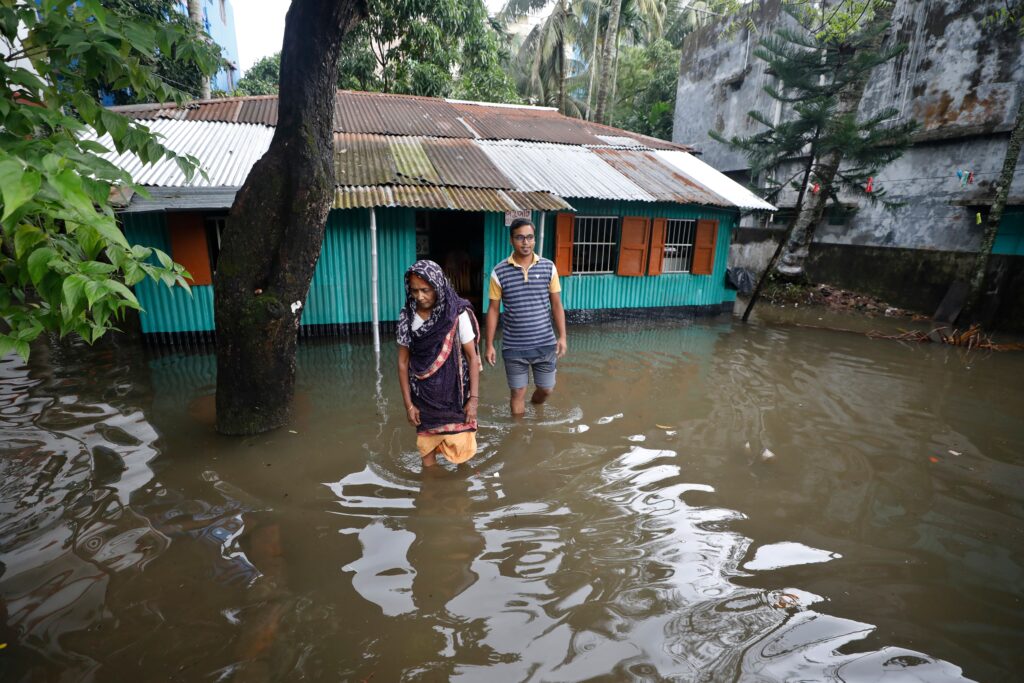Virtually every part of Bangladesh is vulnerable to cyclones, floods, landslides, storms, rising temperatures, heatwaves and other climate change impacts. Bangladesh is one of the most glaring examples of climate injustice since it produces just 0.56% of global emissions. Yet, it suffers some of the harshest implications of the climate crisis. For the most part, the country is affected by wealthier economies and big polluters rather than the pollution generated by the people of Bangladesh themselves. For example, the average person in Bangladesh emits around 30 times less CO2 than the average American.
Climate change poses real risk and Bangladesh is in dire need of ambitious climate adaptation and mitigation actions. Without a quick and adequate response, the country will face humanitarian crises and social challenges lasting decades.
Impacts of Climate Change in Bangladesh
Economic Impacts
The Global Climate Risk Index ranks Bangladesh as the seventh most extreme disaster risk-prone country globally. It is also among the top 10 vulnerable countries in terms of climate change-induced losses. Between 2000 and 2019, the country experienced 185 extreme weather events with a combined total cost of USD 3.72 billion in losses.
High Climate Exposure Areas
A USAID study estimates that 56% of the population (over 90 million) lives in high climate exposure areas, compared to 14% globally. A further 33% (53 million) inhabit areas of very high climate exposure, compared to a 6% global average.
Climate Refugees in Bangladesh
According to the World Bank, by 2050, over 13 million people will be at risk of becoming climate refugees in Bangladesh – more than in any other country in Asia. Other reports’ calculations top 19.9 million.
Scientific American even warns that due to global warming, Bangladesh might experience what may become the largest mass migration in human history.
Floods and Rising Sea Levels
Bangladesh is located on the world’s largest river delta. Most of the country’s territory is less than 10 metres above sea level. The average for coastal areas is less than 3 metres. Scientists estimate that these regions are at risk of facing a sea level rise of between 0.4-1.5 metres by 2100, displacing up to 30 million people.
Furthermore, the country faces an increased risk of cyclones, rainfall, flooding and climate variability. Approximately 80% of Bangladesh’s territory consists of floodplains, and 22% to 30% of it is inundated yearly.
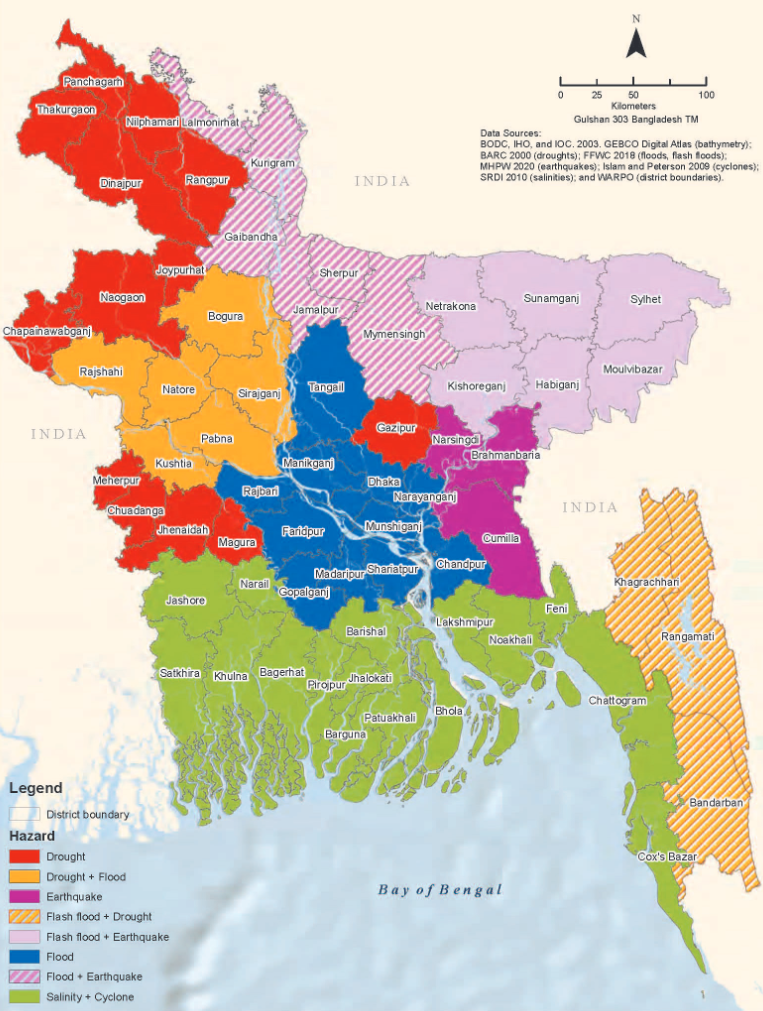
Paired with the high population density, it means that even isolated extreme weather events can affect many people, especially coastal communities.
According to the World Bank, floods affect a greater population base than any other natural hazard in the country. In 2022, for example, Bangladesh suffered one of the most devastating floods in its history, impacting 7.2 million people.
The heavy rainfall from May 17-25, 2022, affected over 2 million people. Disturbingly, this isn’t just a one-off event. According to studies, 60% of the worldwide deaths caused by cyclones in the past 20 years occurred in Bangladesh.
About a third of the population of Bangladesh lives by the coast, with floods and riverbank erosions affecting around a million people annually. Once every three to five years, up to two-thirds of Bangladesh is flooded. According to the IPCC, those events will continue with greater frequency and severity.
Heat Stress
In 2022, Bangladesh suffered a heatwave with temperatures never seen in decades.
According to the WHO, intense heat stress is associated with severe dehydration, acute cerebrovascular accidents, heat strokes and more. It also increases the risk of disease outbreaks and death in people with chronic diseases, children and the elderly.
Furthermore, elevated temperatures can significantly increase mental health-related morbidity and mortality.
Scientists note that the heatwave in Bangladesh has hit the poorest and the most vulnerable the hardest. Several reasons contribute to this, from poorer overall health conditions to living in inadequate housing conditions – buildings with no ventilation or insulation, metal roofs, more heat absorption – and the inability to afford cooling.
The intense heatwave also led to the increased concentration of impurities in water. This came on top of the drinking water contamination caused by the floods in the country. Currently, around 20 million Bangladeshi are affected by the salinisation of drinking water caused by climate change. As a result of climate change, intense heat across Bangladesh is becoming more severe and frequent.
Air Pollution
According to experts, air pollution is an impact of climate change affecting Bangladesh. Air pollution and climate change have a two-way relationship. Air pollution exacerbates climate change, while climate change also worsens air quality.
Bangladesh was ranked as having the worst air quality in the world. In 2022, the concentration of PM2.5 was 13.2 times WHO’s annual air quality guideline value. Pollution reduces a Bangladeshi person’s life by around seven years on average. It is responsible for about 20% of the country’s premature deaths.
Both this and the climate change impacts tormenting Bangladesh have a common denominator: the use of fossil fuels. Bangladesh is one of the most fossil fuel-dependent economies in South Asia. The country relies on coal, oil and natural gas to generate over 97% of its electricity.
Since Bangladesh’s local gas reserves will last for just another 11 years, the government has started importing LNG. It also plans for mass new coal capacity additions. However, the additions will further worsen the air quality problem in the country.
Furthermore, the severe energy crisis has caused persistent blackouts throughout 2022, which are likely to continue until 2026. As a result, the country will struggle to ensure enough power for cooling in the summer, further exposing its population to heat stress.
Can Adaptation and Mitigation Help Tame the Climate Change Impacts in Bangladesh?
Climate change impacts in Bangladesh are causing humanitarian crises, including food and water insecurity, mass health problems, salinisation of agricultural land, loss of life and livelihoods and more.
This doesn’t even cover the economic impacts of climate change in Bangladesh, including reduced labour efficiency and the wiping out of between 7 and 10 billion working hours annually due to heat stress. Dhaka alone loses USD 6 billion worth of labour productivity annually.
Furthermore, the IPCC warns that global warming may cost Bangladesh 2-9% of its GDP by 2050. This is a result of the increased extreme heat, sea-level rise and other unpredictable weather events.
The group also predicts that 4 million people are at risk of losing their homes, and 25% of Bangladeshis will live in water scarcity by 2050.
The IPCC report notes that most of these impacts are irreversible and, therefore, can’t be reversed even if emissions decline dramatically.
However, what Bangladesh can do, is reduce the climate impacts.
For example, with the proper policy measures, Bangladesh can reduce the number of climate migrants by up to 80%.
The Necessary Climate Change Adaptation and Mitigation Measures For Bangladesh
The first and most important step is reducing greenhouse gas emissions. While Bangladesh has a lot of work to do on that front, the effectiveness of this measure isn’t entirely under its sole control but depends mainly on the bigger polluters.
However, Bangladesh can take many timely and effective measures locally to prevent and mitigate the impacts of climate change in Bangladesh.
For example, implementing a HEWS (Heat Early Warning System) program similar to India can help prevent heat-related mortality and risks. This could also be the case if early warning systems for storms and floods were developed. Meanwhile, creating a Heat Adaptation Plan and ensuring sheds with clean drinking water and more green spaces in urban areas could help to ease heat stress further.
Another critical measure is prioritising the transformative adaptation of cities to ensure they are better equipped to host climate refugees, similar to the case of Mongla.
Efforts to improve disaster preparedness are also highly needed. Such solutions include building barriers to stop flooding, flood-control gates, better drainage systems, water reservoirs and water treatment plants.
Since parts of the country face a potential 40% drop in agricultural output – including a decrease in rice and wheat production by up to 17% and 61% – respectively, it is necessary to work on introducing crops, rice varieties and other food sources that are more adaptive to the changing climate.
Other much-needed actions include improving the public health service platform, addressing air pollution hot spots and more.
Racing Against Time
All these measures are necessary and urgent. Bangladesh is in a tough spot where it can’t afford to wait for international assistance or hope that developed countries will deliver on their financing promises.
Fortunately, the country has begun to act. It has taken its fate into its own hands and is already delivering on some of the measures mentioned above. What Bangladesh needs now is urgency so that it can be better prepared when the next disaster strikes.
Viktor Tachev
Writer, Bulgaria
Viktor is a writer that specialises in green finance and ESG investment practices. He holds a Master's degree in financial markets and has over a decade of experience working with companies in the finance industry, along with international organisations and NGOs. Viktor is a regular contributor to several publications and comments on the likes of sustainability and renewable energy.
Viktor is a writer that specialises in green finance and ESG investment practices. He holds a Master's degree in financial markets and has over a decade of experience working with companies in the finance industry, along with international organisations and NGOs. Viktor is a regular contributor to several publications and comments on the likes of sustainability and renewable energy.


